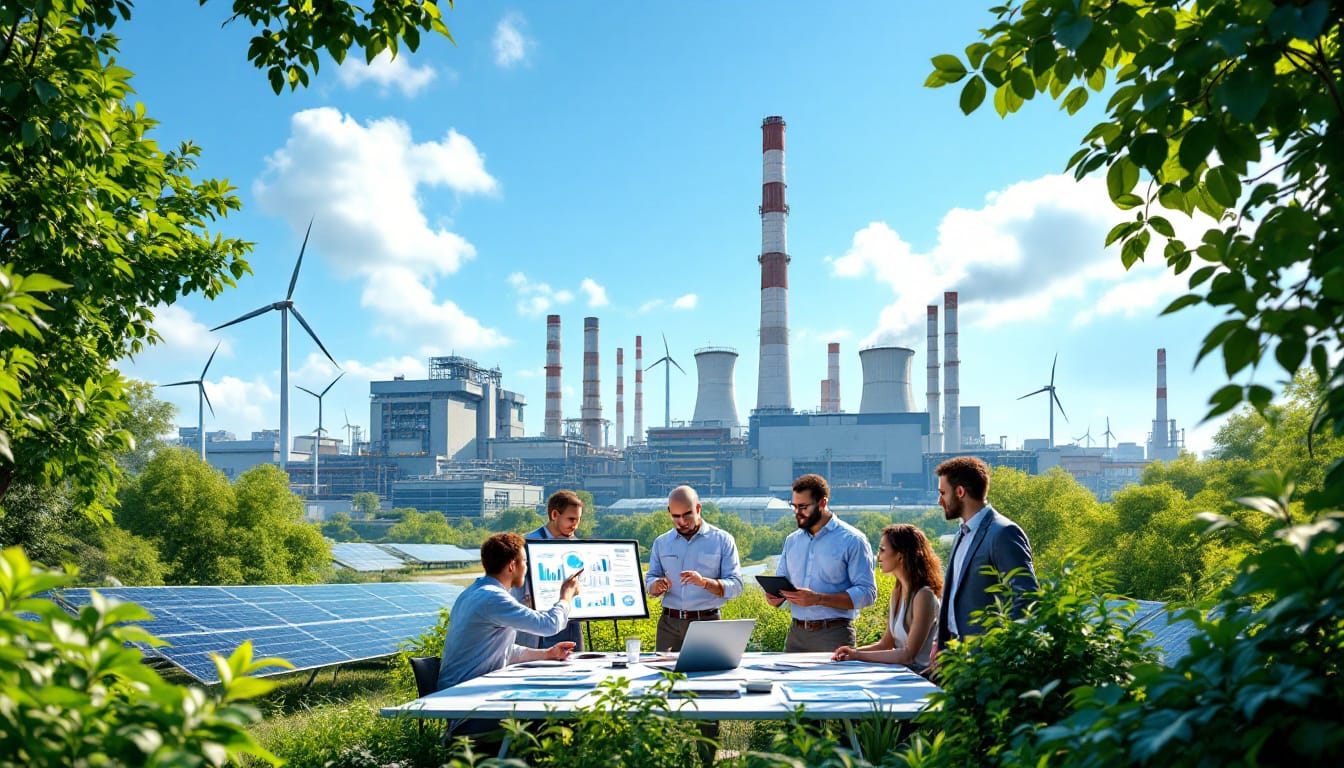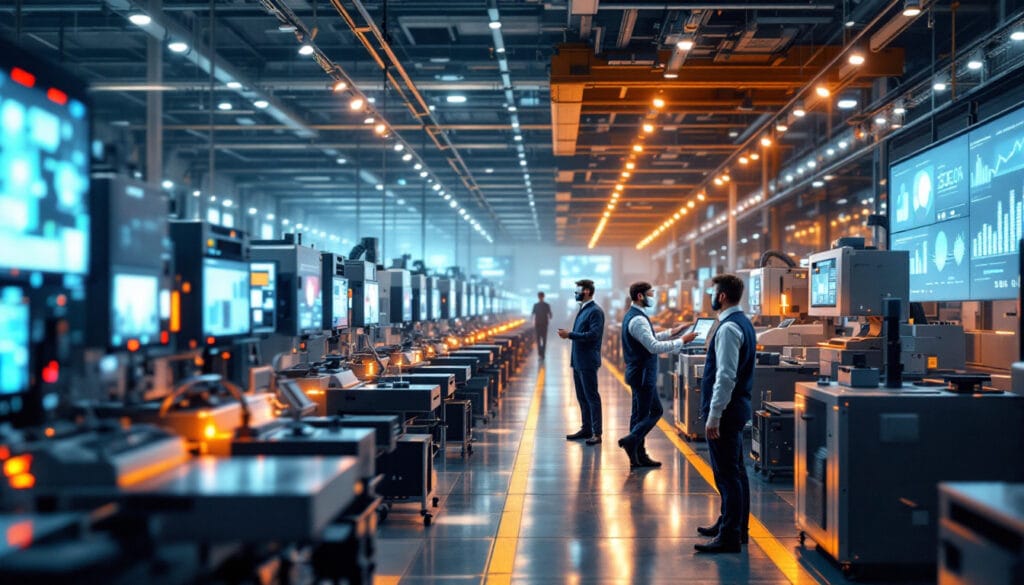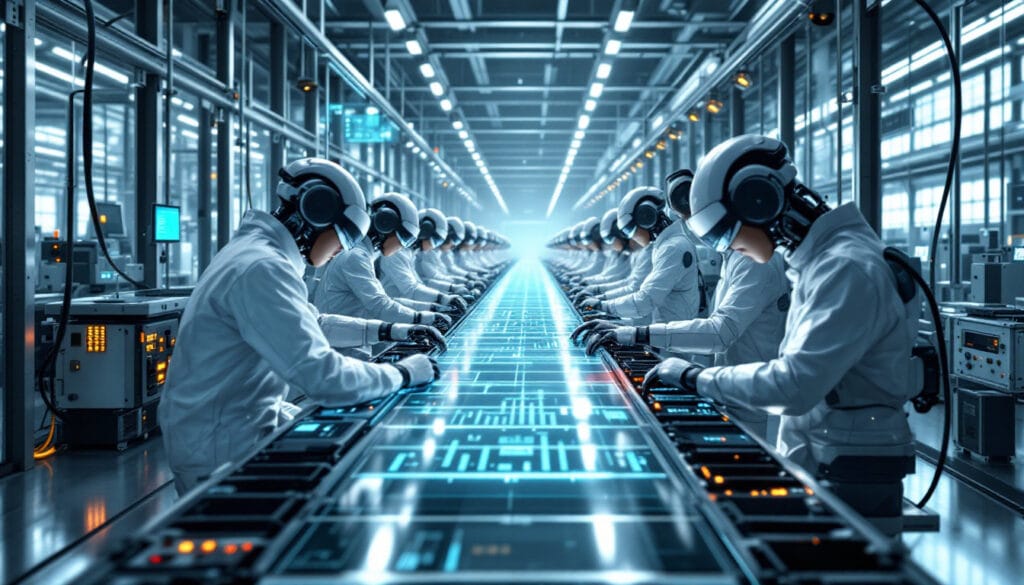“`html
Welcome to the digital age where every online interaction is scrutinized with unprecedented precision.
Security mechanisms are evolving to distinguish humans from machines, thus ensuring a smooth and secure user experience.
However, sometimes certain online activities are perceived as robotic, triggering security alerts.
When your online behavior is interpreted as that of a robot, it may hinder your access to the site. If you are using an anonymous proxy, it is recommended to disable it and try again. If the problem persists, do not hesitate to contact customer service mentioning the incident number: 1ef108eb-cy3y-4fbf-a4ed-582c2b451199. In the meantime, you can continue browsing by verifying that you are human by clicking on the “I am human” box.
“`

Table des matières
ToggleWhat are the goals of the State with these new project calls?
The State’s initiative to launch five new project calls with a total budget of 400 million euros is part of a global strategy aiming to promote the decarbonization of industry. In the face of current climate challenges, it becomes imperative to reduce greenhouse gas emissions from industrial activities. These project calls aim to support innovative solutions for a sustainable energy transition.
By investing heavily in research and the development of green technologies, the government seeks to encourage companies to adopt more environmentally friendly practices. This approach also aligns with France’s commitments regarding carbon neutrality by 2050.
Moreover, these project calls aim to strengthen the competitiveness of French industries on the international stage. By integrating cutting-edge technologies and optimizing industrial processes, companies can not only reduce their carbon footprint but also improve their efficiency and profitability.
How is the budget of 400 million euros distributed among the different projects?
The total budget allocated of 400 million euros is strategically distributed to cover various aspects of industrial decarbonization. Each project call targets a specific sector or a particular technology, thus ensuring a holistic approach to ecological transition.
For example, a significant portion of the budget is dedicated to the development of renewable energy. Projects like the new hydrogen production facility from biomass in Marne, launched by Haffner Energy, benefit from robust financial support (see link).
Another portion of the funding is allocated to the decarbonization of the chemical industry, a sector traditionally high in CO2 emissions. Innovative initiatives from partners like Deloitte, led by Yves Lenain, aim to explore complex but essential solutions to reduce emissions in this field (more information here).
Finally, a portion of the budget is reserved for emerging technologies like mini-nuclear, with projects such as Naarea, which aim to revolutionize clean energy production (details available here).
What types of initiatives are supported for the decarbonization of industry?
The initiatives supported by these project calls cover a wide range of innovative technologies and methods aimed at reducing carbon emissions. Among the main orientations, we find:
Green Hydrogen Production
The development of green hydrogen is crucial for the decarbonization of many industrial sectors. By using renewable energy sources to produce hydrogen, companies can replace traditional fossil fuels, thereby significantly reducing their CO2 emissions.
For example, Haffner Energy recently launched a new hydrogen production facility from biomass in Marne, demonstrating the potential of this technology (details here).
Mini-nuclear and new energy sources
Mini-nuclear represents another avenue explored for decarbonized energy. Projects like Naarea, highlighted by Denergy Observer, aim to develop small-scale nuclear reactors, more flexible and suited to current energy needs (more information here).
Carbon Capture and Storage Technologies
Carbon capture and storage (CCS) represents an effective method to reduce CO2 emissions from industrial processes. By capturing emitted CO2 and securely storing it, industries can limit their environmental impact while continuing their operations.
Innovative projects in this area are also favored by the project calls, with a particular focus on viable long-term solutions.
What are the selection criteria for eligible projects?
To be eligible for the project calls, initiatives must meet several strict criteria defined by the State. These criteria aim to ensure that the selected projects will have a significant impact on the decarbonization of industry while being economically and technically viable.
Among the main criteria are:
- Technological Innovation: Projects must propose new solutions or significantly improve existing technologies to reduce carbon emissions.
- Economic Viability: Initiatives must demonstrate the capacity to be economically profitable in the medium and long term.
- Environmental Impact: Projects must prove a substantial reduction in CO2 emissions and other positive environmental impacts.
- Replicability: Proposed solutions must be adaptable and deployable at scale across different industrial sectors.
- Collaboration and Partnerships: Strong collaboration between businesses, research institutions, and other stakeholders is often valued.
Furthermore, projects must align their objectives with national and European policies regarding energy transition and decarbonization.
What economic and environmental impacts are expected from these project calls?
The investment of 400 million euros in these five project calls promises to generate significant returns both economically and environmentally. Economically, these initiatives should stimulate technological innovation, create specialized jobs, and enhance the competitiveness of French industries in the international market.
For example, the development of green hydrogen and mini-nuclear could open new markets and attract additional investments, thus contributing to sustainable economic growth.
In terms of environmental impact, the decarbonization of industry is expected to lead to a notable reduction in CO2 emissions. According to a recent study, partial de-industrialization in France has already resulted in a reduction of 9.2% in CO2 emissions since 1973 (more details here). The new projects aim to accelerate this positive trend by integrating clean technologies and optimizing industrial processes.
Moreover, these initiatives will contribute to achieving the climate goals set by the Paris Agreement, further reinforcing France’s commitment to combat climate change.
Additionally, promoting sustainable technologies can also lead to a reduction in energy costs over the long term, thereby providing additional economic benefits to participating companies.
Another important aspect is the creation of synergies between different industrial sectors, fostering a circular economy where resources are used more efficiently and sustainably.
Examples of successful synergies
The launch of projects like those of Haffner Energy and Naarea shows how different technologies can complement each other to achieve common decarbonization goals. By combining green hydrogen production with mini-nuclear solutions, it is possible to create a more resilient energy ecosystem that is less dependent on fossil fuels.
Such synergies are essential to maximize the impact of public investments and ensure a smooth and effective energy transition.
How do these project calls fit into France’s overall decarbonization strategy?
These project calls fit into a broader national strategy aimed at positioning France as a leader in energy transition and industrial decarbonization. By aligning these initiatives with government policies and international commitments, France seeks to create an environment conducive to innovation and sustainability.
The Ministry of Economy and industrial actors such as MEDEF play a crucial role in defining and implementing these strategies. The MEDEF strategies show how large companies actively engage in the economic and political debate to support these initiatives.
Moreover, these projects are also in line with the objectives of the National Low Carbon Strategy (SNBC), which aims to reduce greenhouse gas emissions across all sectors of the French economy.
Furthermore, by supporting innovative technologies and encouraging collaboration between different stakeholders, the State fosters an ecosystem conducive to rapid and effective energy transition.
This integrated approach not only addresses immediate environmental challenges but also prepares the French economy for future requirements regarding sustainability and environmental responsibility.
What are the challenges to overcome for successful industrial decarbonization?
Despite the laudable intentions behind these project calls, several major challenges must be overcome to ensure the success of industrial decarbonization. Among these challenges are:
- High costs of green technologies: The initial investment required to adopt decarbonized technologies can be a barrier for many companies, especially SMEs.
- Technical complexity: Implementing innovative solutions like carbon capture or green hydrogen requires deep technical expertise and complex integration into existing industrial processes.
- Social and regulatory acceptance: Some technologies, notably mini-nuclear, may face public resistance or encounter significant regulatory hurdles.
- Reluctance to change: Companies may be hesitant to modify their established processes, especially if long-term benefits are not clearly demonstrated.
To overcome these obstacles, it is essential to implement robust support mechanisms such as grants, tax incentives, and training programs. Additionally, close collaboration between the public and private sectors is necessary to share best practices and accelerate the adoption of green technologies.
Moreover, awareness and education play a crucial role in the social acceptance of new technologies. Informing the public about the environmental and economic benefits of decarbonization initiatives can help reduce reluctance and foster a smoother transition.
The role of public-private partnerships
Partnerships between the public and private sectors are essential to overcome financial and technical barriers to decarbonization. By working together, these two sectors can pool their resources, share their knowledge and develop innovative solutions more rapidly. These collaborations can also facilitate access to funding and reduce risks associated with large-scale projects.
Examples of such collaborations already exist, like those between energy companies and research institutions to develop carbon capture technologies or green hydrogen solutions.
What are the prospects for the future of decarbonized industry in France?
The five new project calls with a budget of 400 million euros represent a decisive step towards a more sustainable industrial future in France. These initiatives should not only reduce carbon emissions but also stimulate innovation and enhance the competitiveness of national industries.
In the medium term, one can expect increased adoption of green technologies, a reduction in production costs due to improved energy efficiency, and job creation in the emerging sectors of the green economy.
In the long term, the decarbonization of industry could transform the French industrial landscape, making it more resilient to climate challenges while offering unprecedented economic and environmental opportunities.
Moreover, these efforts could position France as a global leader in industrial decarbonization, attracting international investments and strengthening its influence in international climate negotiations.
Finally, the success of these projects could serve as a model for other countries looking to undertake similar initiatives, thus contributing to a global effort to combat climate change.
Où en est la #décarbonation des 50 sites industriels français les plus émetteurs ?
— The Shift Project (@theShiftPR0JECT) October 26, 2024
L'état des lieux que publie @usinenouvelle révèle le risque qui motive les travaux du Shift Project.https://t.co/W7X72NfllQ





